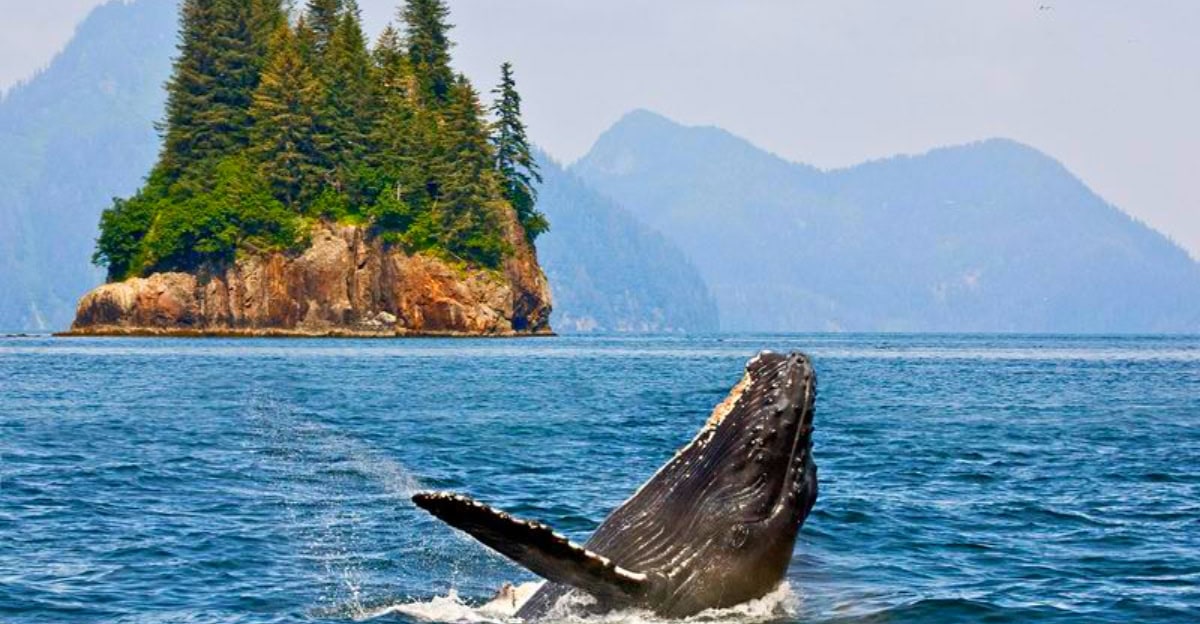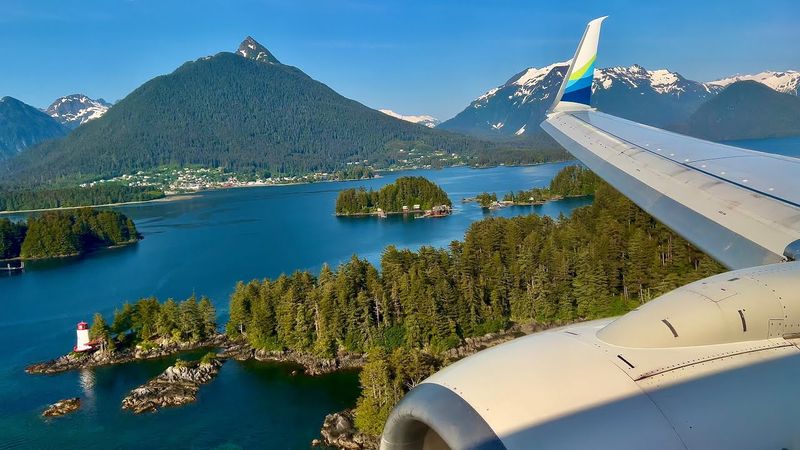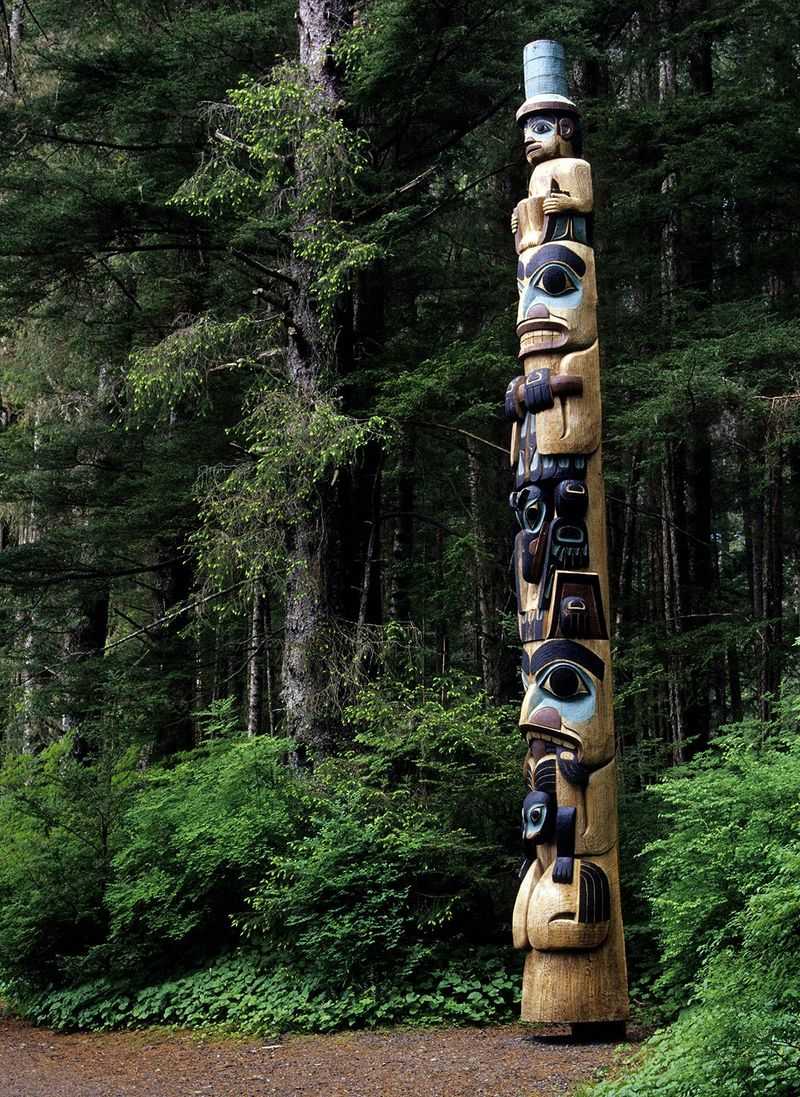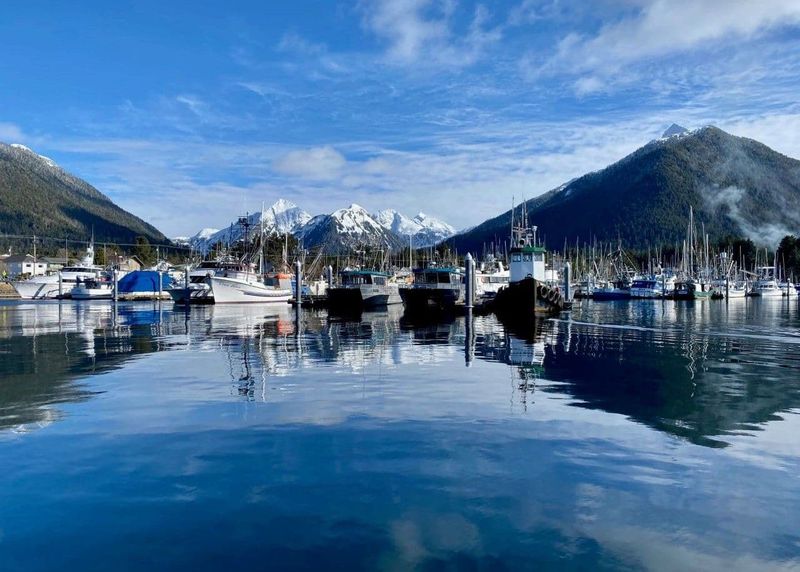Nestled between Ketchikan and Juneau on Baranof Island, Sitka stands as one of Alaska’s most uniquely isolated communities. Unlike most American towns, you won’t find highways leading to this coastal gem – it’s completely cut off from the mainland road system. The only way to reach this historic former Russian capital is by water or air, creating an extraordinary travel experience that begins the moment you plan your journey.
Island Isolation: Sitka’s Unique Geographic Position
Perched on the western edge of Baranof Island in the Alexander Archipelago, Sitka occupies a truly remarkable spot on the Alaskan map. Located approximately 95 miles southwest of Juneau and 185 miles northwest of Ketchikan, this coastal community embraces its watery boundaries.
The town spreads across portions of Baranof and Japonski islands, with mountains rising dramatically behind its harbor. This distinctive geography creates a natural barrier that has kept traditional road connections impossible.
Unlike mainland Alaskan communities connected by the state’s highway system, Sitka remains blissfully detached from the continental road network. This isolation has preserved much of its natural beauty and cultural character, making it a living example of Alaska’s frontier spirit – a place where the journey itself becomes part of the adventure.
By Air or Sea: The Journey to Sitka
Arriving in Sitka transforms ordinary travel into an adventure. Alaska Airlines offers daily jet service connecting this island community with Seattle, Anchorage, and neighboring Alaskan cities. The approach provides breathtaking views as planes descend over the Pacific Ocean toward the runway extending into Sitka Sound.
For those preferring a maritime approach, the Alaska Marine Highway System ferries provide year-round service. These vessels transport both passengers and vehicles along the Inside Passage, with Sitka as a regular port of call. The ferry terminal sits seven miles north of downtown, with shuttle services bridging the gap.
Cruise ships frequently dock in summer months, temporarily doubling the town’s population. Whether soaring above spruce-covered islands or navigating the sheltered waterways, reaching Sitka reminds travelers that some journeys are meant to be savored rather than rushed.
Russian America to Tlingit Territory: Sitka’s Rich Heritage
Few American towns boast a cultural tapestry as vibrant as Sitka’s. Once the capital of Russian America, the town’s skyline still features the distinctive onion domes of St. Michael’s Cathedral, a reminder of its unique historical trajectory. The Russian presence (1799-1867) layered atop thousands of years of indigenous Tlingit habitation.
Walking Sitka’s streets reveals this fascinating convergence of cultures. Russian colonial architecture stands alongside traditional Tlingit totem poles in Sitka National Historical Park. The community celebrates this dual heritage through museums, cultural centers, and annual festivals that bring history to life.
The town’s isolation has helped preserve these cultural treasures. Without highways bringing waves of development, Sitka maintains an authentic connection to its past. Visitors experience a living museum where Russian samovar tea traditions and Tlingit carving demonstrations coexist in harmonious cultural dialogue.
Wild Encounters: Natural Wonders Surrounding Sitka
Surrounded by the Tongass National Forest, America’s largest national forest, Sitka offers wildlife encounters that seem almost mythical. Bald eagles perch on spruce trees lining the harbor, while humpback whales breach offshore during feeding seasons. Brown bears roam the island’s remote valleys, occasionally wandering into town neighborhoods.
The temperate rainforest environment creates an emerald backdrop for outdoor adventures. Hiking trails like the Gavan Hill path or Harbor Mountain Road lead to spectacular alpine views, while kayakers paddle among curious sea otters in Sitka Sound. Anglers cast for salmon in streams that have sustained the region’s inhabitants for millennia.
Remarkably, all these natural wonders remain accessible despite the town’s isolation. Local guides have mastered the art of showcasing Sitka’s wilderness treasures, turning the absence of road connections into an advantage that preserves the region’s pristine character.
Community Life: How Isolation Shapes Sitka’s Character
Sitka’s roughly 8,500 residents have cultivated a self-reliant spirit that defines island living. Local grocery stores stock up during barge deliveries, while gardeners maximize the growing season in community plots. When winter storms occasionally disrupt scheduled flights, neighbors rally to share resources until supplies arrive.
This isolation breeds innovation. The town generates hydroelectric power from Blue Lake Dam, reducing dependence on imported fuel. The local hospital maintains specialized equipment and telemedicine connections to handle emergencies when medical evacuations aren’t possible.
Yet isolation also nurtures community bonds. Residents gather for potlatch celebrations, fishing derbies, and the annual Sitka Summer Music Festival. Everyone knows the ferry and flight schedules by heart, and mail delivery days bring neighbors together at the post office. This shared experience of island life creates a tight-knit community where interdependence becomes a cultural strength rather than a limitation.









